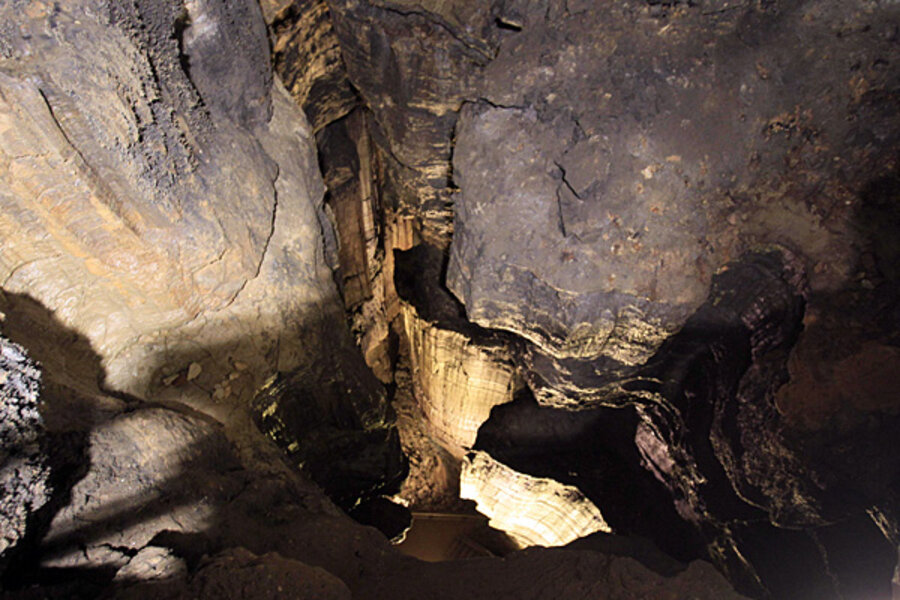The National Park system is the best vacation value in the country
Over the past two weeks, Sarah and I combined a tenth anniversary getaway for the two of us along with a family vacation for ourselves, our children, and Sarah’s parents and youngest sister. This meant almost two full weeks of traveling.
Along the way, I kept taking notes on the inexpensive and free stuff I discovered along the way, but when I came home and actually evaluated the list, one giant theme kept coming through.
The National Park Service (and, similarly, the U.S. Forest Service) provide tremendous value for the traveler within the United States.
My list of “frugal tips” from our travels of the past two weeks was simply loaded with references to these two services, particularly the National Park Service. If you’re going anywhere, look into what these two services have to offer in the area to which you’re traveling.
Here are some specific highlights from our recent travels.
In Boston, the Freedom Trail was an amazing day-long highlight. Most of historic Boston is maintained by the Park Service, the highlight of which is the Freedom Trail, which is a clearly marked route about three miles in length through Boston and Charlestown, which takes you by dozens of different landmarks relevant to the start of the American Revolution.
Not only did they provide us with free maps along the way, they also provided a free Android/iOS app that provided a step-by-step guide to the trail. In addition, there were guided tours of the trail led by NPS employees and several regular talks at various points along the trail. We toured the USS Constitution (“Old Ironsides”) for free with a tour guide as part of this day-long excursion, as well as the wonderful Bunker Hill Monument which provided a great view of the city.
In Salem, the Park Service provided a free guided tour of the harbor along with the Customs House. This was a roughly hour-long tour that highlighted the history of maritime trade in New England as well as highlighting the Customs House where Nathaniel Hawthore worked while writing The Scarlet Letter. If you miss the tour guide, the Park Service offers a free downloadable audio tour of the area.
During our drive through rural New England, we came upon the White Mountain National Forest in New Hampshire. Not knowing much about the area, we stopped at a U.S. Forest Service station near North Conway, where a ranger spent half an hour telling us about the White Mountains, providing us with a bunch of printed maps, and several specific trail recommendations and how to find those trails. We ended up going on three of those trails, all of which were (depending on the trail difficulty and style) maintained by the Forest Service with trail clearing, informative signs, and other efforts. Again, all of this was free.
Later on, in Kentucky with our full family, we visited Mammoth Cave National Park. There were many different guided tours available there, some free and some requiring a small fee, along with an abundance of trails, a museum, and several talks, all of which were free.
Near the end of the trip, we also visited the Jefferson National Expansion Memorial (the Gateway Arch in Saint Louis), which, much like Mammoth Cave, offered several free things to do (in particular, a museum) along with a relatively low cost tour of the Arch itself. My children particularly enjoyed this museum and kept wanting to stay here and look around at more and more things.
(Another note: if you’re in Saint Louis and have children, both the Science Center and the Zoo are free.)
In the end, we spent perhaps half of our recreational time on the entire vacation using services from the National Park Service and U.S. Forest Service and the vast majority of it was free. What few things were not free were priced very sensibly, too.
If you’re planning a family summer vacation, keep our national parks and national forests in mind. Search their websites to see what they offer in whatever area you’re traveling to and take advantage of the many free and low-cost things they have to offer.
I will say, without a doubt, these services saved us significant money and time on our vacation as well as provided us with enriching information and experiences. They have been and will continue to be key parts of our summer travel planning.







